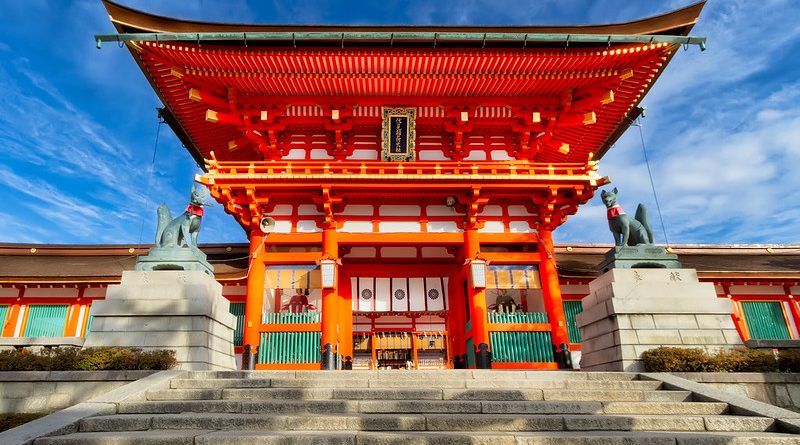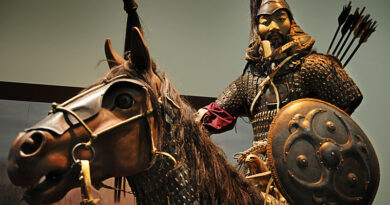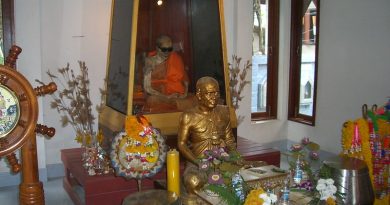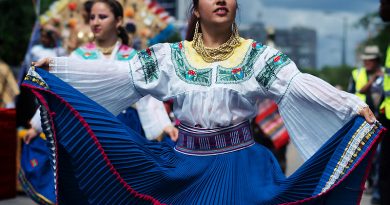THE HISTORY OF JAPAN
ANCIENT JAPAN
The early periods of Japanese history can be divided into four distinct periods. Firstly, there is the Japanese Paleolithic Period, which lasted several millennia between 40,000 BC to 14,000 BC. Human presence in the Japanese archipelago is generally supported by the presence of artifacts, particularly stone tools and axes. The earliest human remains being estimated at between 14,000-18,000 years old. Despite this, evidence of human activity prior to this remains controversial, with the Japanese Palaeolithic Hoax showing that several artifacts were planted atvarious sites, thereby making the presence of human activity and any substantial information about this period controversial and contentious.
Following the Palaeolithic period was the Jomon Period which lasted nearly ten thousand years, between 14,500 BC to around 300 BC. During this period, thearchipalego was dominated by a hunter-gatherer culture, which gradually became increasingly sophisticated. The period is named after, and most well-known for its pottery, much of which has survived to the present day in the form of artifacts. As the period grew in its complexity, the population grew increasingly sedentary, establishing several villages. Towards the end of the period, the archipelago became exposed to new technologies such as bronze and iron while the population dramatically increased.
The Yayoi Period, part of the Iron Age, followed. Although lasting only 50 years, the Yayoi Periiod was nonetheless a very important one, with rice agriculture increasing significantly and technological advancements occurring. The population almost tripled, while the various tribes eventually were consolidated under separate kingdoms, believed to have numbered around 100.
This period was followed by the Kofun Period, which lasted around 300 years . This is the first period of recorded Japanese history. However, many of these records areconsidered to be somewhat unreliable. The period was named for the Kofun burial mounds, which housed the remains of the Japanese leaders. Built to a colossal scale in the shape of a key-hole,these often took over a decade to complete. During this period, the disparate tribes and kingdoms gradually became unified under a singular dynasty, which was based centrally in Yamato, in Central Japan’s Kinai region. This hereditary line remains the world’s longest—ruling dynasty, still in power in the present day. The Kofun Period is generally considered to have marked the end ofAncient Japan, although there was some cultural overlap with the following period as Classical Japan emerged.
CLASSICAL JAPAN
The Asuka Period followed the Kofun Period, and lasted until 710. This was a period of considerable cultural development as it marked the introduction of the Buddhist religion from the mainland. Furthermore, there were several important political and artistic developments, the political system shifting dramatically while architectural styles changed, inspired heavily by Chinese influences These reached their peak during the Heian Period, which spanned from 794 to 1185. During this time, the Imperial Court, previously the most powerful force in Japan, saw its influence wane considerably as that of the Fujiwara Clan (essentially an aristocratic family) rose.
The Heian Period ended with bloodshed and war. Beginning with a dispute for the throne in 1156 conflict erupted across Classical Japan and remained constant over the next thirty years, waged mainly between the Minamoto and the Taira clans. The former eventually prevailed. The Medieval Age then enroached upon Japan, and with it the Shogunate and the Samurai emerged.
MEDIEVAL JAPAN
In 1185, the Kamakura period began, lasting for nearly 150 years. It is considered to be one of the country’s most pivotal turning points marking the beginning of a major societal shift. The idea of a Shogun, a de facto military leader, became a major part of Japanese society. During this period, the Shogun was effectively the empire’s de facto leader. Although the emperor technically held power, this was more ceremonial.
The period essentially saw Japan transition into a feudalist society based around the increasingly complex social hierarchy. Furthermore, Kamakura Period saw the introduction of the samurai, a Japanese cultural icon, and generally considered to be the burgeoning country’s elite warrior.
The period was marked by several escalating conflicts. Internal fighting was near constant throughout the period, reaching its climax with a bloody civil war, which saw the shogunate briefly abolished and imperial rule restored in its place.
Arguably the most notable military event of the period was the Japanese defeat of theinvading Mongol armies under Kubelai Khan. Undoubtedly the most feared and strong military force at the time, the Mongols were however unable to successfully annex the archipelago over two separate occasions in 1274 and 1281. The second attempt was felled by a typhoon.Regardless, these victories inspired a sense of military pride and resilience within Japan, whichwould remain for several centuries.
Following the destruction of the Kamakura shogunate in 1333, the Muromachi Period began, lasting over 200 years until 1568. This period saw internal feuds continue to escalate, with provincial conflict remaining high throughout. Most notably however, was the first introduction of European influence in Japan. This marked the end of Medieval Japan andthe emergence of Modern Japan.
The first European arrivals were Portuguese explorers, who first came into contact with Japan in 1543. Amongst these explorers were merchants and Jesuit missionsaries who introduced Christianity to the population. For nearly 100 years Japan was exposed to a number of Western influences. Christianity became an Influential religious presence in the country, due in no small part to the work of St. Francis Xavier, an important missionary. By the end of the century, Japanese Catholics numbered over 200,000.
Furthermore, there were several more tangible influences such as foods and materials. The most important of these however was the introduction of firearms to the Japanese. This significantly changed the way combat was conducted. Despite other European explorers following the Portugese, the Western influence sharply declined at the beginning of the seventeenth century.
Following the country’s unification under Tokugawa Ieyasu, Japan returned to its secluded, insular original state, in opposition to the rising influence of Christianity. With a few minor exceptions, contact with foreigners was severed and prohibited. Guns were outlawed while any foreigners would be sentenced to death. The Christian population were violently persecuted. Despite this seclusion, this ushered in a long period of peace known as the Edo Period, and western foreigners , or the ‘barbarians’ as they were referred, didn’t reestablish relations for another 250 years.
MODERN JAPAN
The Edo Period lasted nearly 300 years. Its end was marked with the fall from power of thes shogunate a system in place for centuries. Social unrest grew over the eighteenth and nineteenth centuries due to several agricultural crises, while the samurai grew increasingly discontented due to huge pay cuts. The resurfacing of the West proved to be particularly damaging. The Japanese were exposed to several Western ideas through writings traded by the Dutch, which lead thecountry to become less insular. Of particular notability was the arrival of the Americans in1853. The expedition was lead by Commodore Matthew C. Perry with the intention of reigniting trade with Japan and ending its seclusion.
The shogunate were defenceless against the more technologically -advanced American forces, who strong-armed the Japanese into accepting what were called the ‘unequal treaties’, which were very one-sided and benefitted the Western powers,allowing their citizens to move and trade freely in Japan. This was seen as the last straw and any remaining faith in the shogunate’s ability to lead was extinguished. Long-simmering tensions grew violent and erupted into the Boshin War of 1868-9, which finally saw the collapse of the Shogunate.After this, the country changed significantly.
The Meiji Period, lasting until 1912, saw Japan undergo significant modernisation. It grew increasingly Westernised as the new government sought to catch up with rival nations. The government grew increasingly complex and the country became much more technologically advanced. In addition, the military’s power grew, which aligned with the new government’s desire to expand its territory.
The victorious Russo-Japanese War of 1904 cemented Japan’s reputation as a military force to be reckoned with. In 1910, its imperialist designs became apparent as it annexed Korea. Japan’s power grew dramatically over the following decades. Having aligned with Allied forces during the First World War, Japan enjoyed economic prosperity following the Treaty of Versailles, claimed a number of new colonies from Germany and strengthened its international relations with other world powers.
The Showa Period, spanning theentirety of Emperor Hirohito’s 63-year reign from 1926 to 1989, was a significant chapter inJapanese history. With the power of the military growing, radical right-wing groups became prominent and influential in Japanese politics and society. The desire for territorial expansion became a central focus of the Japanese government and their imperialist desires soon drew them into the Second World War.
The Manchurian Incident of 1931, a staged bombing, was used as a pretext to invade Manchuria in Northern China. Over a period of five months, the Japanese successfully invaded the region, their occupation lasting until the end of World War Two,. It reached its barbaric apex with the notorious Nanking Massacre. Japan’s invasion was opposed by the Western powers, particularly the US, who imposed economic sanctions.
Allying with Germany in retaliation, tensions continued to escalate with the West. Eventually, reacting against sanctions, the Japanese military bombed Pearl Harbour, Hawaii in a surprise attack in 1941, leading the United States to become involved in WW2. Japan initially proved to be a military force to be reckoned with, seizing several European Pacific colonies such as Hong Kong, the Phillipines and Malaysia, amongst others.
Their military dominance however soon began to wither as they endured defeats in the Battles of Midway and Guadalcanal. Their resilience, its origins traced back to their victory against the Mongols, remained unparalleled. It was not until 1945 that the Japanese forces surrendered following the atomic bombings of Hiroshima and Nagasaki. This proved to be a significant turning point in Japanese history. Occupied by alliedf forces until 1952, the far-right wing influence was extinguished while the political and social structure changed extensively.
Relations with the US were restored with the San Francisco Peace Treaty of 1951. In the decades following the Second World War, Japan’s economy grew considerably . By 1968, it was the second-largest economy in the world behind the United States.Indeed, Japan still remains one of the world’s most culturally and economically vital countries on the planet.
Destination – Japan




